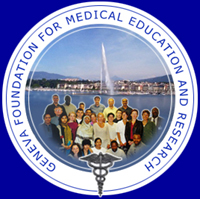The phonoarticulator system: it's importance in the spoken communication of educational professionals
El aparato fonoarticulador: importancia en la comunicación oral de profesionales de la educación
Mileidy Rodríguez Prieto1* http://orcid.org/0000-0003-2894-134X
Orlando Díaz Gómez2 http://orcid.org/0000-0002-7103-3235
Yanet Rodríguez Prieto2 http://orcid.org/0000-0003-2158-7851
Javier Alejandro Oquendo Alvarez2 http://orcid.org/0000-0002-4434-1531
1 "Marta Abreu" Central University of Las Villas. Cuba.
2 Villa Clara University of Medical Sciences.
Cuba.
*Author for correspondence. Email: mrprieto@uclv.cu
ABSTRACT
The present article aims to highlight the importance of the phonoarticulator system, specifically in the educational professional at different levels of education, which serves as theoretical support for the teacher to understand the psychophysiological disorders that may manifest themselves in order to avoid them to obtain better results in the communication performance act. Recommendations for its use and protection are proposed according to studies carried out.
MeSH: faculty; communication; education, medical.
RESUMEN
El presente artículo tiene como objetivo resaltar la importancia del aparato fonoarticulador como soporte teórico, específicamente para el profesional de la educación en los diferentes niveles de enseñanza, con el objetivo de que comprenda los trastornos psicofisiológicos que puedan manifestarse, a fin de evitarlos y obtener mejores resultados en la realización del acto verbovocal. Se proponen recomendaciones para su uso y protección de acuerdo con estudios realizados.
DeSC: docentes; comunicación; educación médica.
Submitted: 12/02/2020
Accepted: 14/12/2020
The voice is the working instrument of many professions, and it is the teachers´ par excellence. Taking care of it, knowing how phonation is performed and the organs that makes it possible is important for its care. Many people consider that it´s not only important to have proper diction, but tone of voice, breathing, and cadence that are influential factors in good communication.
The voice and diction are indispensable faculties for the educator's work when transmitting knowledge to their students and achieving certain effects on the understanding of the educational message. They are the work instruments that it has to use in its daily life for the development of the functions and for this reason; the teacher is considered a professional of the voice.
The educator must have a clear diction and precise articulation, with intonation and inflection of its voice that qualify the content of the expression to establish communicative effectiveness with the learner, the family and the community. It is the model to be imitated by the student and by society in general.(1)
This professional is frequently exposed to misuse and abuse of the voice when speaking for a long time, loud or too fast, using an inappropriate tone or incorrect breathing.
Usually the teacher does not make adequate use of teaching resources that allow them to save their voice and reduce vocal effort; it also uses the voice as a disciplinary control, all of which determines an abuse of their vocal organ. To this can be added inadequate conditions in which teaching is generally imparted such as: the size of the classroom, an unfavorable acoustics to the resonance of sound (for example, Spanish-Literature teachers who read a lot aloud, those of Physical Education that they must work in open spaces), external noises, the presence of dust (from chalk, as a resource for writing on the blackboard) and other factors such as ventilation and classroom lighting that can even favor the indiscipline of students due to psychic irritation or distraction, which contributes to stress that favors vocal abuse.
The misuse of the voice and the non-compliance with the prophylactic measures for its conservation makes possible for the teacher to be more prone to suffer from professional dysphonic disorders. At present, this affectation constitutes one of the most frequent health problems in teachers, accompanied by laryngeal damage.(2)
Dysphonia in the teacher has unfavorable repercussions at different levels. By not fully fulfilling their work, it can affect psychologically its emotional communication, which affects its quality of life and its biopsychosocial balance. It is necessary to bear in mind that speech is a function closely related to the psyche of the individual since ideas, feelings and emotions are expressed through words that allow reflecting the physiological and psychological individuality of the person.(3)
Voice problems, causing temporary or permanent incapacity for work, can destabilize the teaching-learning process due to absence of a teacher, which implies an excess of work for other teachers and difficulties in the continuous teaching of the student; on the other hand, it has repercussions on the country's economy if the high cost of training a teacher who must leave its career before or after a short time after graduation is taken into account, add to this the payment of social security for medical certificates and expertise.(4)
The phonation apparatus is made up of three different groups of organs:
-
Breathing organs (infraglottic cavities: lungs, bronchi and trachea).
-
Organs of phonation (glottic cavities: larynx, vocal cords and resonators -nasal, buccal and pharyngeal).
-
Organs of articulation (supraglottic cavities: palate, tongue, teeth, lips and glottis).
Its proper functioning is controlled by the central nervous system through Broca's area: a section of the human brain involved with the production of language, located in the left hemisphere of the cerebral cortex.(5)
It is important that the teacher knows the risk factors that can be enemies of its voice and take into account some tips for the prevention of vocal disorders, limited not only to the phonoarticulator system, but also to the care of the functioning of the organism as a whole by indirectly intervene in this function.
Alfonso Alejo et al.(6) and Yánez Palacios et al.(7) recommend some tips for the use of voice by educators:
-
Do not use the voice as a controlling method of discipline; the raised tone, sometimes full of anger, gradually loses its rhythm and melody to become a high-pitched, unpleasant voice, which is rejected.
-
Make use of the proper vocal technique, especially when exposures are very long, taking care to take the corresponding pauses to rest the voice.
-
Taking care of the mouth opening which will offer a role model for the students and will give their vocal cords greater rest.
-
Use the verbovocal emission properly, starting from the elementary aspects of the vocal mechanism to avoid fatigue and dysphonic disorders.
-
When external noises interfere with your exposure, make no effort to make your voice heard; If the noise is temporary, wait for it to disappear, and if it is permanent, change to an activity where you do not have to use your voice.
-
During acute periods of respiratory infections try to keep your voice quiet.
-
Attend specialized consultations in case of presenting some type of affectation related to the phonoarticulatory system.
-
Do not speak while writing or erase the blackboard because of how harmful it can be to inhale the chalk dust, in addition to the fact that at that moment the projection of your voice is not directed towards the students.
-
Exercise a vocal technique daily for at least 15 minutes and warm up your verbovocal emission before class for no more than 10 minutes.
-
Economize the voice in the classroom, balance the activities to be developed, including carrying out practical written exercises or the use of information and communication technologies.
Through this research paper, its authors have tried to emphasize the importance of voice care for educators at all levels of education and warn of the negative consequences that its incorrect use can generate.
BIBLIOGRAPHIC REFERENCES
1. Botella Quirant MT, Esteve Faubel JM. Voz del docente como herramienta principal de comunicación en el aula. En: Investigación, innovación y enseñanza universitaria: enfoques pluridisciplinares. XIV Jornada de Redes de Investigación en Docencia Universitaria; 30 Jun-1 Jul 2016; Alicante: Universidad de Alicante; 2016. Disponible en: https://rua.ua.es/dspace/bitstream/10045/58463/1/XIV-Jornadas-Redes-ICE_022.pdf
2. Márquez Valdés AM, Morales Barceló AL. La preparación del docente para el cuidado de su voz. Rev Atlante: Cuad Educ Des [Internet]. 2018 [citado 11/02/2020];(9):[aprox. 20 p.]. Disponible en: https://scholar.google.es/scholar?as_q=&as_epq=La+preparaci%C3%B3n+del+docente+para+el+cuidado+de+su+voz&as_oq=&as_eq=&as_occt=any&as_sauthors=&as_publication=&as_ylo=&as_yhi=&hl=es&as_sdt=0%2C5#d=gs_cit&u=%2Fscholar%3Fq%3Dinfo%3AYgoJlEFeV68J%3Ascholar.google.com%2F%26output%3Dcite% 26scirp%3D0%26hl%3Des
3. Reyes Gutiérrez M. Prevalencia de los trastornos de voz ocupacionales en los docentes de dos instituciones educativas de nivel superior en Colombia en los años 2013-2014 [tesis en Internet]. Bogotá: Universidad del Rosario; 2014. Disponible en: https://core.ac.uk/download/pdf/86444795.pdf
4. Castiblanco Aldana JP, Pineda Moreno S. Conservación de la voz, fatiga al hablar, salud laboral. [Internet]. Magisterio.com.co: Editorial Magisterio; 2018 [actualizado 09/03/2018; citado 11/02/2020]. Disponible en: https://www.magisterio.com.co/articulo/conservacion-de -la-voz-y-salud-laboral-docente
5. Calais-Germain B, Germain F. Anatomía para la voz: entender y mejorar la dinámica del aparato vocal. Barcelona: La Liebre de Marzo; 2013.
6. Alfonso Alejo AJ, Guerra Hernández GF, Morejón Barrueto Y. El cuidado y autocuidado de la voz en los maestros ambulantes y hospitalarios desde la concepción de promoción de salud. Rev Conrado [Internet]. 2015 [citado 11/02/2020];11(50):[aprox. 5 p.]. Disponible en: https://conrado.ucf.edu.cu/index.php/conrado/article/download/236/pdf_28
7. Yánez Palacios JF, Merchan Gavilán ML, Yánez Palacios LP. Ejercicios de respiración en la rehabilitación fonoarticular: propuestas para la práctica. Rev Univ Soc [Internet]. 2017 [citado 11/02/2020];9(2):[aprox. 7 p.]. Disponible en: http://scielo.sld.cu/pdf/rus/v9n2/rus38217.pdf
Declaration of interests
The authors declare no conflict of interest.
Contribution of the authors
All the authors managed the information, reviewed the writing of the manuscript and agreed to the version finally submitted.
This article has been published under the Creative Commons license.
Copyright (c) 2021 EDUMECENTRO

Esta obra está bajo una licencia de Creative Commons Reconocimiento-NoComercial-CompartirIgual 4.0 Internacional.










